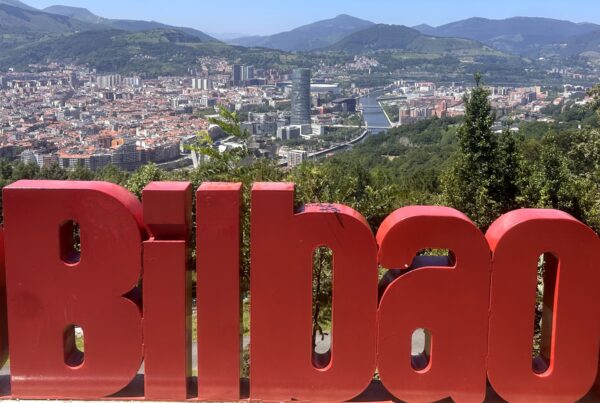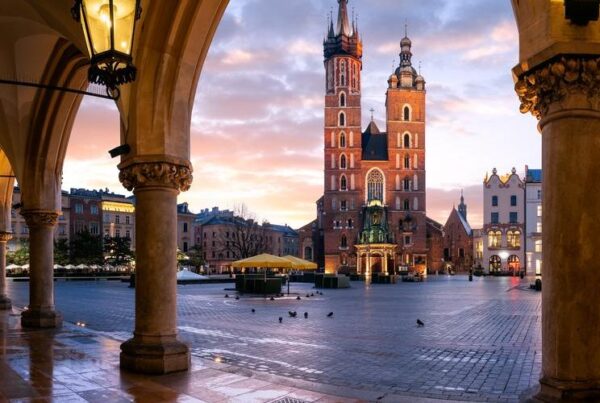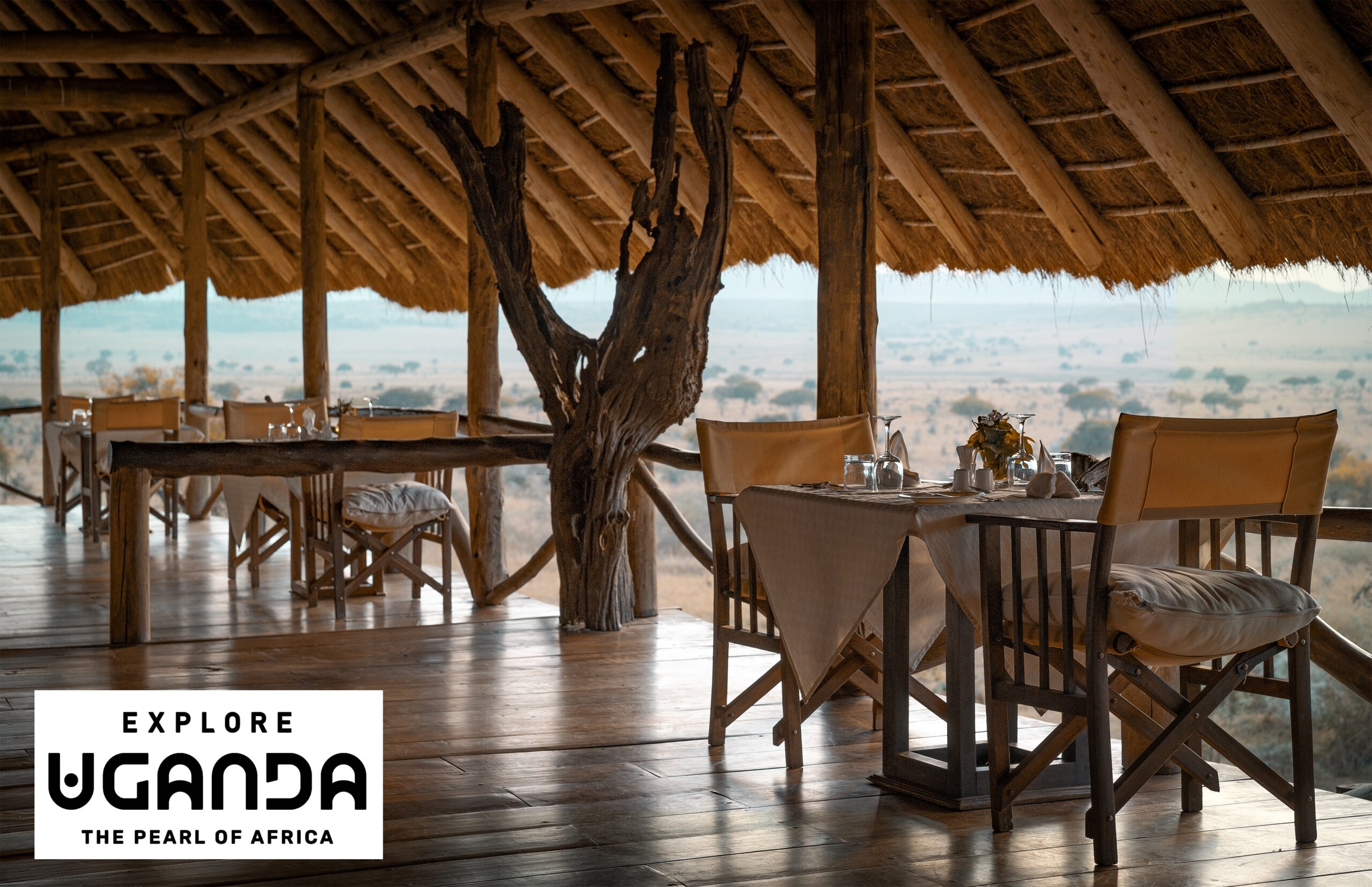Europe’s classic tourist trail through Paris, Amsterdam, Bruges and beyond is rich with beauty, history and culture.
Yet tucked quietly between Belgium’s bustling cities lies a place that offers something very different: reflection, remembrance and a connection to stories that shaped the world we know today.
Flanders Fields, once a major battle theatre on the Western Front during the First World War, is not just a destination. It is an experience that stays with you long after you leave.
Step into living history
The battlefields and cemeteries of Flanders Fields stand as powerful reminders of the cost of war. Towns such as Ypres, Poperinge and Passchendaele are steeped in history, where visitors can walk the same ground soldiers once did over a century ago.
The In Flanders Fields Museum, housed in Ypres’ restored Cloth Hall, offers an immersive look at the human side of conflict. Through personal letters, photographs and artefacts, it tells the stories of those who lived, fought and endured during the Great War.
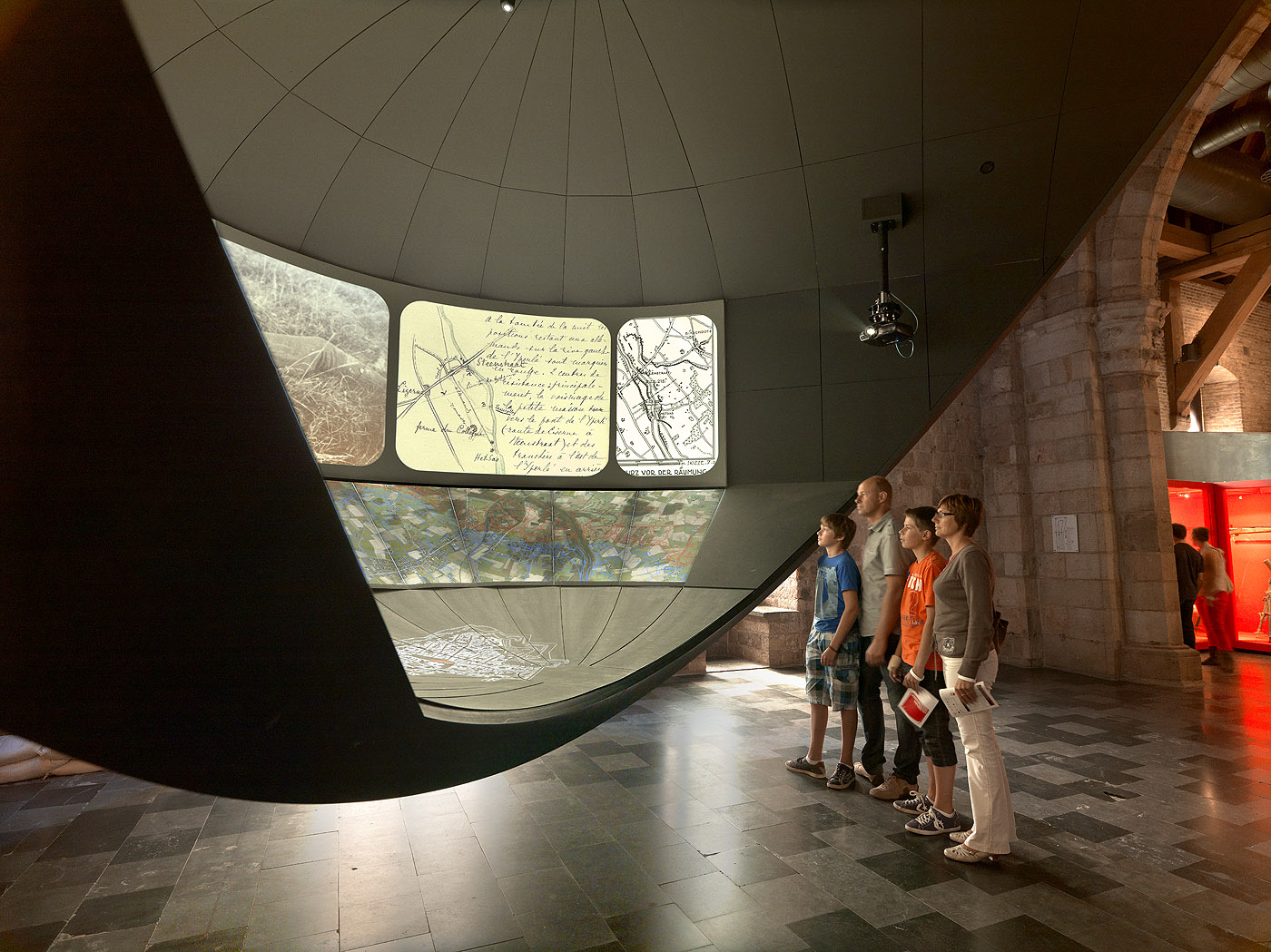 For many travellers, moments of quiet remembrance are among the most moving parts of the visit.
For many travellers, moments of quiet remembrance are among the most moving parts of the visit.
Standing among the thousands of white headstones at Tyne Cot Cemetery or listening to the haunting notes of the Last Post ceremony at the Menin Gate are experiences that leave a lasting impression.
A landscape of remembrance and renewal
Flanders Fields is not all solemn reflection. It is also a landscape of renewal. Once devastated by war, the region now blooms with red poppies, fertile farmland and peaceful villages. The contrast between past and present makes every visit deeply meaningful.
Cycling and walking trails link the key historical sites, winding through tranquil countryside and small local communities. Visitors can pause at cafés and breweries along the way, enjoying Belgium’s world-renowned beers, cheeses and chocolates. It is a place where history and hospitality meet naturally.
A personal connection for Australians and New Zealanders
For many Australians and New Zealanders, Flanders Fields holds particular significance. Thousands of ANZAC soldiers fought and died here, far from home. Visiting these battlefields connects travellers to their national story in a way no book or classroom ever could.
Sites such as Buttes New British Cemetery, Hill 60 and Menin Road South Cemetery bear the names of those who served from the other side of the world. Standing there brings an unspoken understanding of sacrifice and legacy.
The Australian Tour Itinerary.
Here is a 2 day self-drive tour that focuses on sights of historical importance for the Australian visitor.
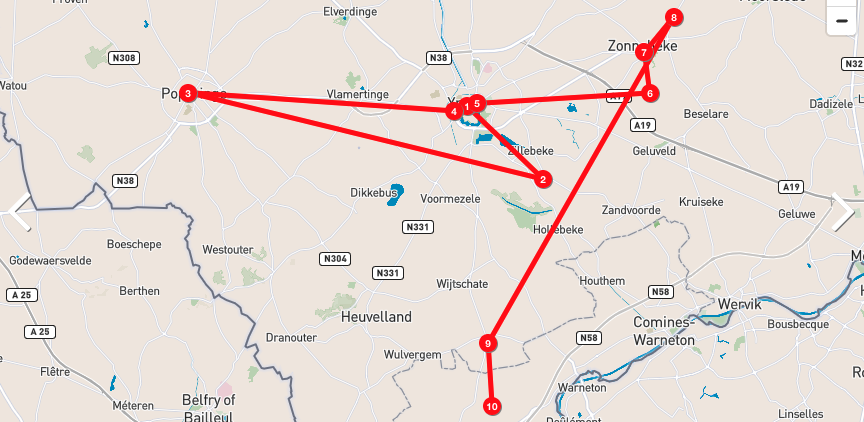
48 hour Flanders Fields Tour for Australians
DAY ONE
STOP 1: In Flanders Fields Museum
The recently renovated museum, located in the impressive Cloth Hall in Ypres highlights the story of the invasion, the trench war and the remembrance since the armistice, while focusing on personal stories.
Take a deep breath and climb the bell-tower (231 steps!) to have a look at what were once the battlefields.
STOP 2: Hill 60 and Caterpillar Crater
Just a 10-minute drive from Ypres, is Hill 60 with its cratered landscape. Australians played a crucial role here, laying underground mines as part of some of the major battles in Flanders. Pay your respects at the memorial for the Australian First Tunnelling Division.
STOP 3: Toronto Avenue Cemetery
Access Toronto Avenue Cemetery via a muddy, narrow country track in Ploegsteert Wood, which harbours 78 graves – all of them Australians. They stand in 3 rows, most of them joined together signifying that this is a mass grave.
STOP 4: Bayernwald
The Bayernwald site (tickets available online) shows how the German army did very much the same as the Allies – dig mines and trenches and build bunkers. The site consists of two mine shafts, a trench system and four bunkers.
STOP 5: Menin Gate
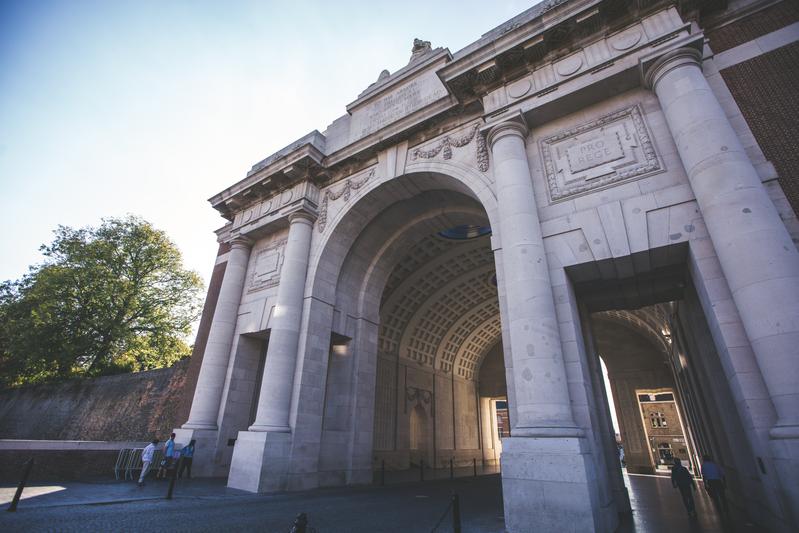
The Menin Gate is by far the most famous Commonwealth war memorial in Flanders. On its white walls are engraved the names of 54,896 Commonwealth soldiers whose bodies were never found (the other 34,000 names are at Tyne Cot Memorial).
STOP 6: The Last Post
Since 1928, each and every evening, apart from the Second World War, the Last Post is sounded under the Menin Gate.
DAY TWO
STOP 1: Passchendaele Museum
The ‘Third Battle of Ypres’ or ‘ Battle of Passchendaele’ is a symbol of senseless military violence. The dugout with communication and dressing post, headquarters, workplaces and dormitories, gives us an idea of how the soldiers had to live underground, like moles, because there was nothing left above ground.
STOP 2: Polygon wood
Deep in the heart of Polygon wood stands Buttes New British Cemetery and the New Zealand memorial to the Missing, which commemorates 383 soldiers of the New Zealand division. On top of the butte (hill), there is the Memorial to the 5th Australian Division. Polygon Wood still contains the remains of several shelters. Also buried in this cemetery are the “Zonnebeke Five”, five Australian soldiers whose remains were discovered in 2007 and of whom three were identified through DNA research. Each year on ANZAC day (25 April), the sacrifice of the ANZAC soldiers is commemorated during an impressive dawn service in this very location.
STOP 3: Brothers in arms Memorial
A memorial in honour of two Australian brothers. John had been buried by his younger brother Jim. John’s grave was found in Zonnebeke in 2006 and seemed that he was buried with great care.
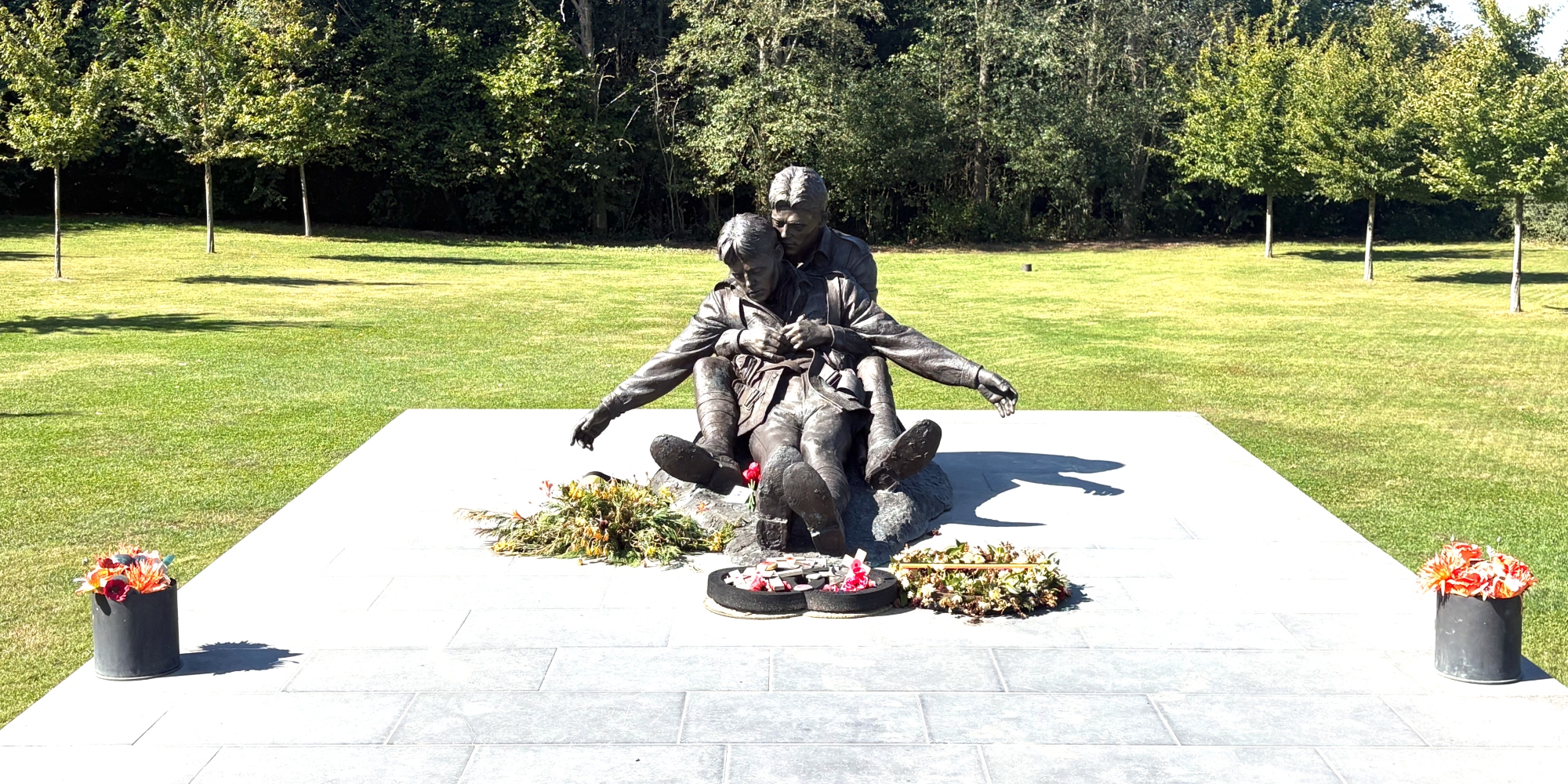
STOP 3: Tyne Cot Cemetery
With its arched wall and colonnades in white stone, the Missing Memorial of Tyne Cot Cemetery instils respect. This is the largest military cemetery of the Commonwealth in the world. Almost 12,000 soldiers are buried here, of which 1,353 Australians. 12,000 white crosses, row after row.
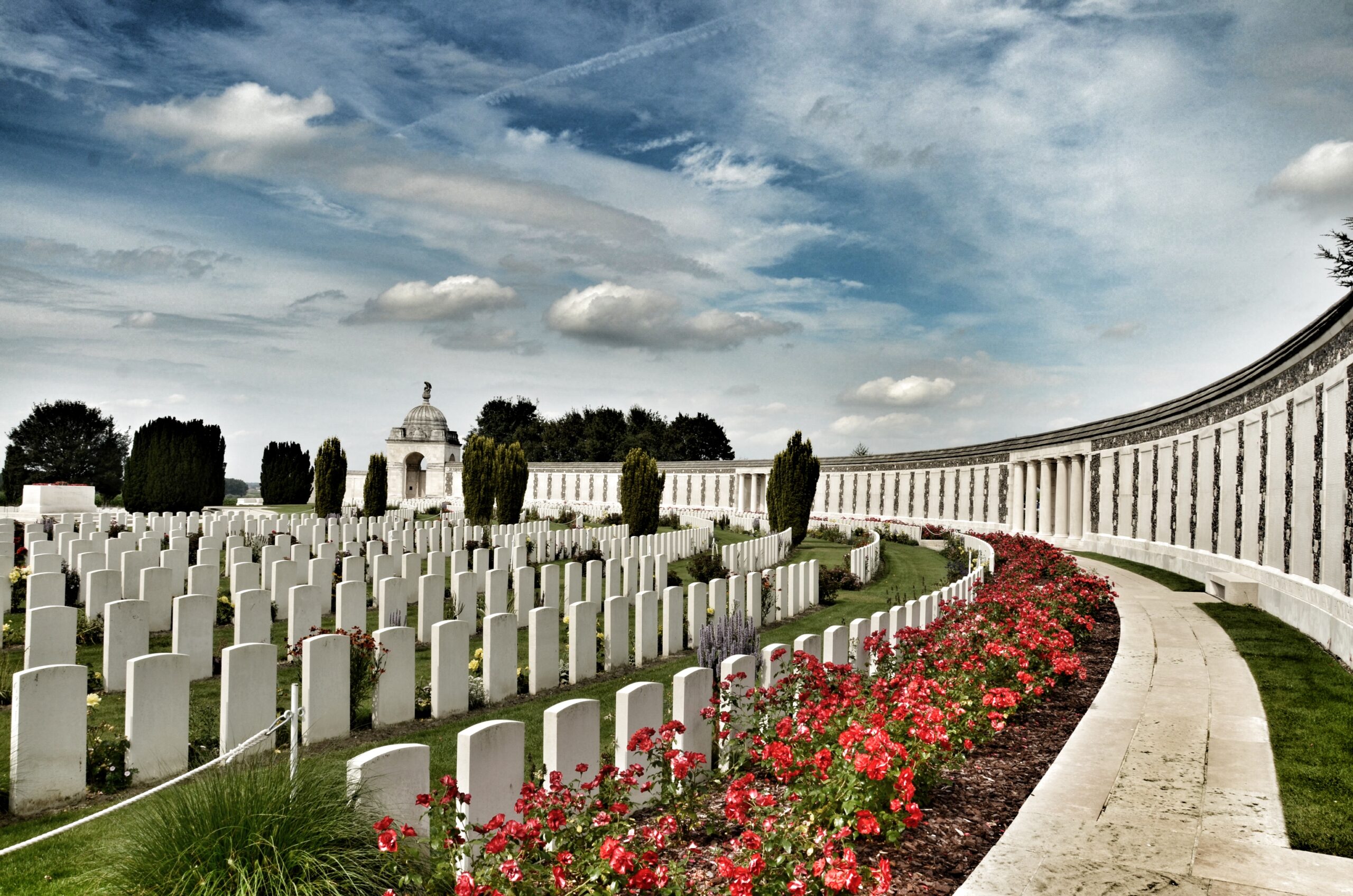
Why it deserves a place on every European itinerary
Adding Flanders Fields to your European tour brings depth and meaning to your travels. It is a chance to balance Europe’s art, architecture and cuisine with a moment of reflection and gratitude.
Standing beneath the Menin Gate or watching poppies sway gently in the breeze reminds us that travel is not only about seeing new places, but about understanding them.
